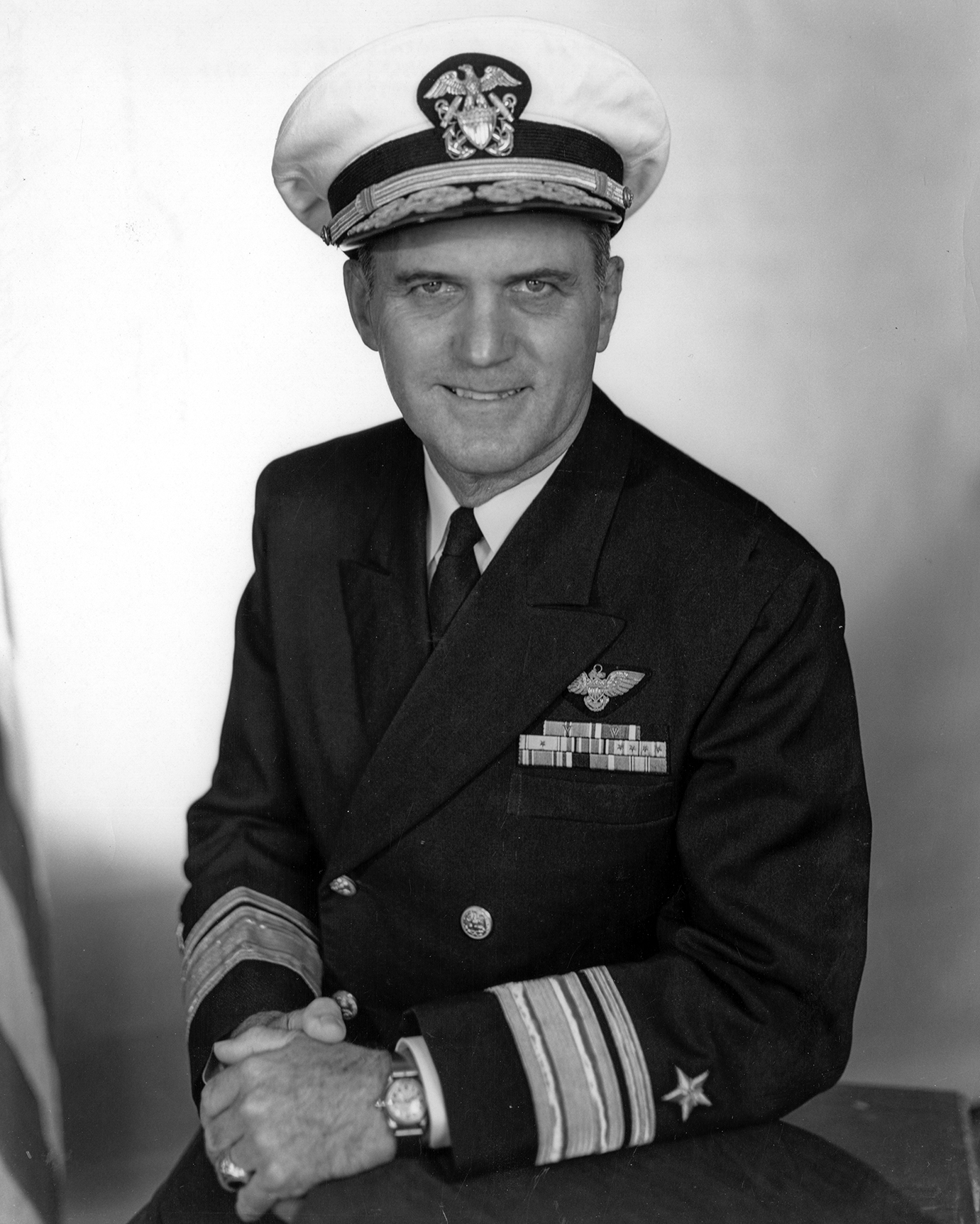
Foley, Francis Drake, Rear Adm., USN (Ret.)
(1910–1999)
Admiral Foley, a navy junior, is an engaging storyteller, and his oral memoir benefits from this strength. He graduated from the Naval Academy in 1932. After brief surface duty in the light cruiser USS Detroit (CL-8), he entered flight training, earning his wings in 1936. Prior to World War II he served in scouting, observation, and patrol squadrons, participating in the search for Amelia Earhart in 1937. He was a flight instructor at the new Jacksonville Naval Air Station when the United States joined the war. In June 1942 he was assigned as air operations officer in the aircraft carrier USS Hornet (CV-8), and recalls in great detail when he and other survivors were forced to abandon ship when this carrier was sunk that October. Other wartime duties included service on the staffs of Commander Task Force 65, Commander Air Solomons, and Commander Fleet Air South Pacific, and as head detailer of the officer flying section in OpNav. Volume I ends with his duties in the precommissioning crew of the large aircraft USS Franklin D. Roosevelt (CVB-42) in early 1945.
In the second volume, Admiral Foley continues with his duties in the Franklin D. Roosevelt (CVB-42) in the mid-1940s. He served consecutively as navigator, air officer, and executive officer. From 1947-49 he served on the staff of the Chief of Naval Air Training. He was one of the Navy's early helicopter pilots, learning to fly them and commanding a helicopter squadron within a 1½-year period. He commanded the seaplane tender USS Salisbury Sound (AV-13) and the attack aircraft carrier USS Shangri-La (CVA-38) in the mid-1950s, and Carrier Division One from 1960-61. He was Deputy Assistant Chief of Staff, Plans and Policy at SHAPE headquarters and then Assistant Deputy Chief of Naval Operations (Fleet Operations and Readiness). From 1967-71 he served as Commandant Third Naval District. His final tour was as the senior member of the U.N. Command Military Armistice Commission in Seoul, Korea. He retired in July 1972.
About Volume I
Based on six interviews conducted by Paul Stillwell from December 1984 through June 1985. The volume contains 470 pages of interview transcript plus an index. The transcript is copyright 1988 by the U.S. Naval Institute; the interviewee has placed no restrictions on its use.
About Volume II
Based on nine interviews conducted by Paul Stillwell from June 1985 through October 1985. The volume contains 496 pages of interview transcript plus an index. The transcript is copyright 1988 by the U.S. Naval Institute; the interviewee has placed no restrictions on its use.



